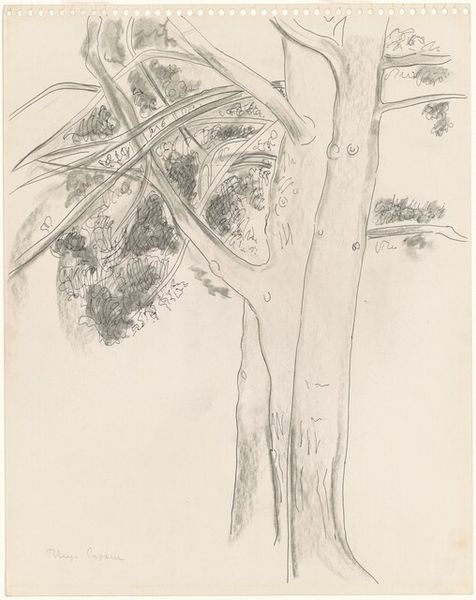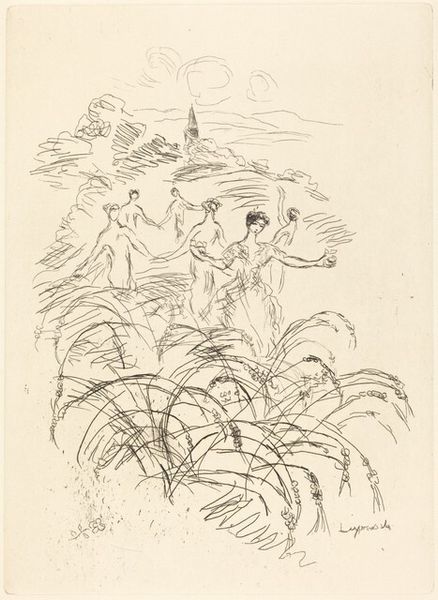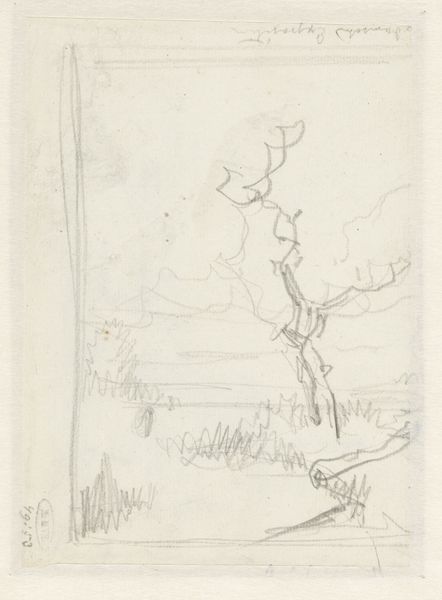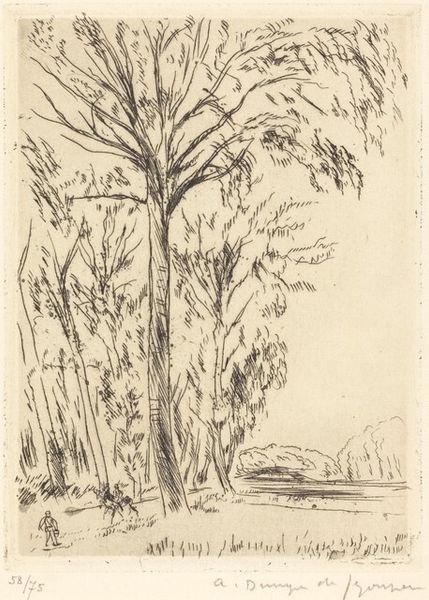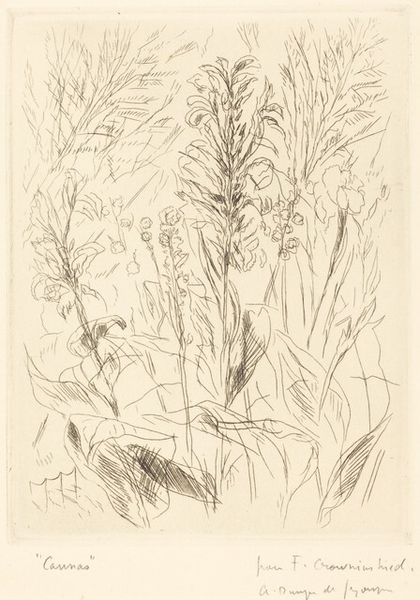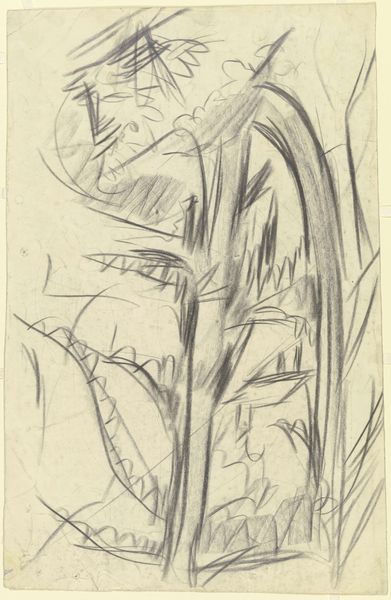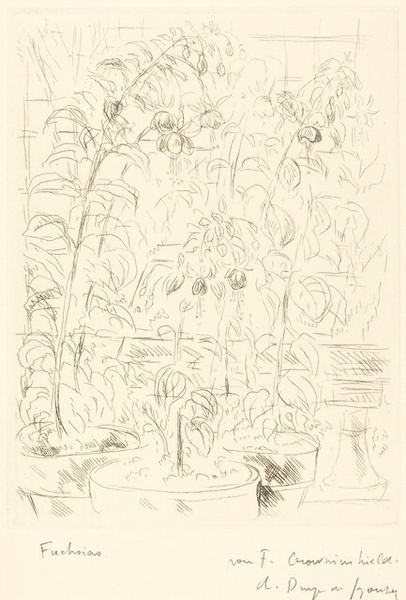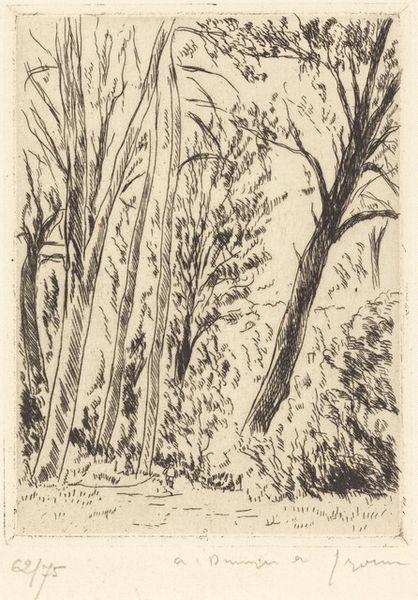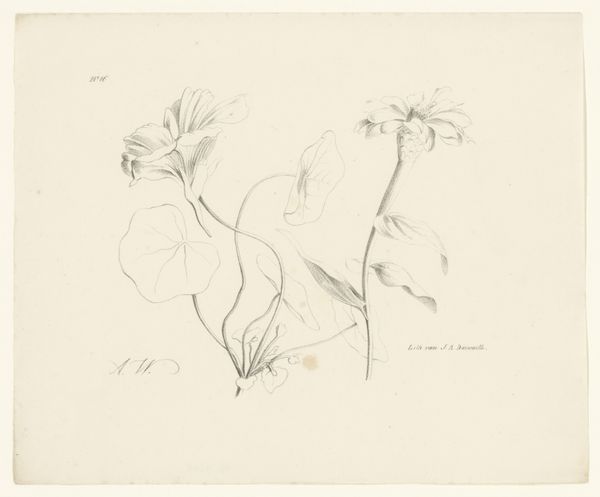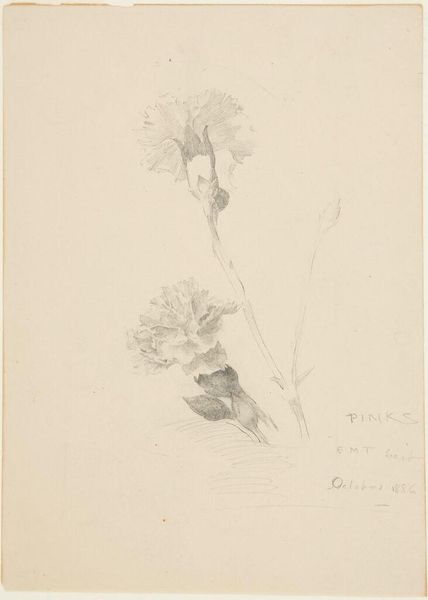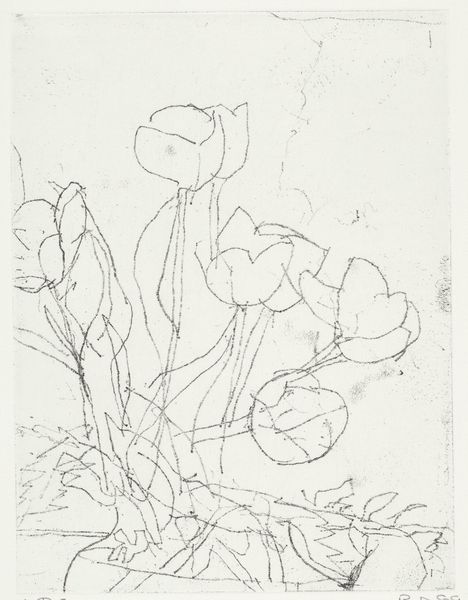
Copyright: National Gallery of Art: CC0 1.0
Curator: Andre Dunoyer de Segonzac created this etching, "Les lys roses," sometime between 1929 and 1932. What's your immediate reaction to this print? Editor: Strikingly minimal. The sparseness of line creates a delicate yet slightly haunting landscape. There is a sense of lightness, even impermanence. Curator: Segonzac, as an artist deeply engaged in representing modern life, particularly during times of social and political unrest, might be using these lilies as a symbol. Given lilies are traditionally associated with mourning and remembrance, consider the broader historical context of the interwar years and the sense of loss permeating society. Editor: Yes, but considering the impressionistic style, shouldn't we primarily focus on the formal composition? Notice how he uses varying line weights to suggest depth and shadow, alluding to form rather than defining it precisely. The strategic use of hatching gives texture to what would otherwise be stark outlines. Curator: While I agree that these techniques are essential for grasping the visual impact, let's consider the absence too. Absence can also speak volumes—perhaps referencing collective traumas and lost identities emerging as legacies of war and industrialization. Editor: A valid reading, however I would be careful. His style is often understood to derive primarily from his technical expertise in line work—we might look towards other drawings for better clues about identity issues than from this seemingly pastoral example. Note how he renders the delicate droop of the lily blossoms, playing with negative space to suggest weight and fragility. Curator: Of course. Segonzac lived through radical shifts, which also challenged social conventions around masculinity, labor, and national identity. Can this floral still-life engage in that wider discourse by perhaps drawing a stark juxtaposition? How these personal botanical scenes challenge ideas is significant in deconstructing power through everyday moments, a theme common in many interwar female artists. Editor: Perhaps a compelling reading with further corroboration, although for me, it returns back to the aesthetic of impermanence, where the flowers exist within a delicate but ever changing ecosystem; this is primarily expressed in the linear rendering. Curator: Interesting points! These combined insights provide a fresh lens through which we might consider Segonzac's choices—how these aesthetic elements become part of cultural statements, echoing beyond the boundaries of formal beauty. Editor: And indeed, whether our interpretation veers towards formal analysis or a focus on sociopolitical dimensions, what stays is a visually subtle, deeply affecting image open for constant re-evaluation.
Comments
No comments
Be the first to comment and join the conversation on the ultimate creative platform.
